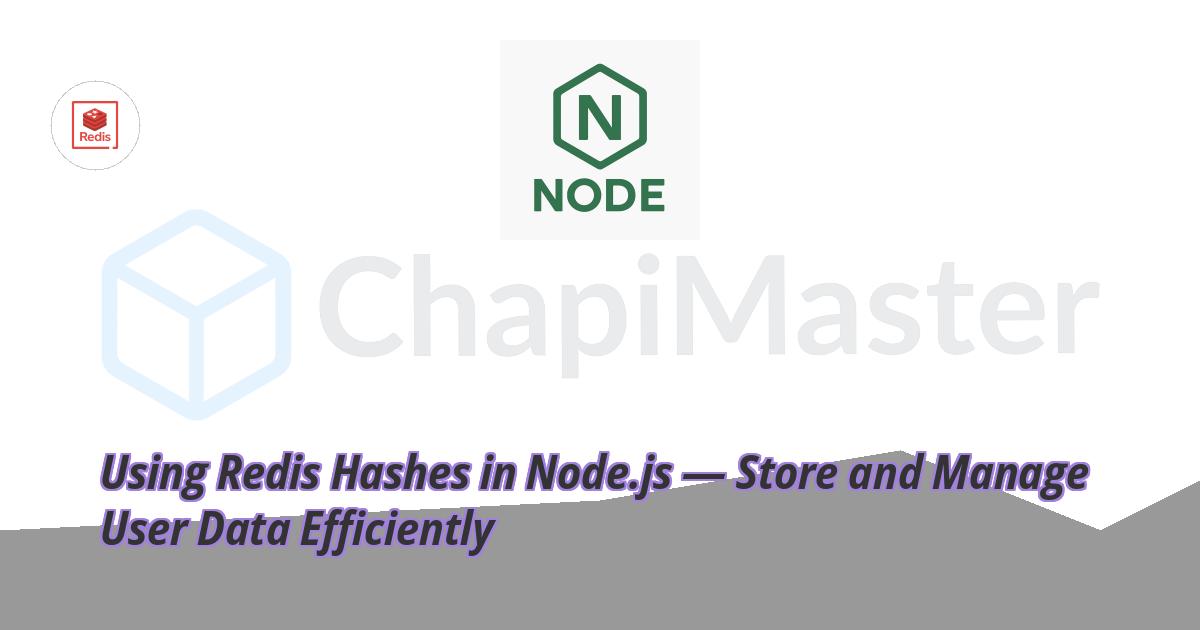Redis Hashes are one of the most powerful data structures available. They allow you to store multiple fields and values under a single key — similar to a JavaScript object. In this post, you'll learn how to store, retrieve, and update Redis hashes using Node.js.
💡 Tip: Redis Hashes are great for representing objects like users, products, or sessions — where each record contains multiple attributes.
Introduction
A Redis Hash is a collection of field-value pairs. Think of it as a mini key-value store inside a single Redis key. Instead of creating multiple keys for each property (like user:101:name, user:101:email), you can store them together under one hash key (user:101).
1. Install Redis Client
If you haven’t already installed the Redis client for Node.js, you can do so with:
2. Create and Connect Redis Client
Import the Redis client and connect to your Redis instance:
import { createClient } from "redis";
const client = createClient();
await client.connect();
console.log("Connected to Redis!");
3. Add a Redis Hash
You can use hSet() to store multiple fields inside a single hash key.
// Add hash (like an object)
await client.hSet("user:101", {
name: "Shahroz",
email: "shahroz@example.com",
age: 27,
});
console.log("User saved successfully!");
⚡ Redis Hashes are ideal for storing structured data — such as user profiles, product details, or app settings.
4. Get a Single Field from the Hash
Use hGet() to retrieve one field from your hash.
const name = await client.hGet("user:101", "name");
console.log("Name:", name);
Output:
5. Get All Fields of a Hash
To fetch all key-value pairs from a hash, use hGetAll():
const user = await client.hGetAll("user:101");
console.log("User:", user);
Output:
User: { name: 'Shahroz', email: 'shahroz@example.com', age: '27' }
6. Update a Field in the Hash
Updating a field is as easy as setting it again with hSet():
await client.hSet("user:101", "age", 28);
console.log("User age updated!");
Redis will automatically overwrite the old value of that field.
7. Disconnect the Client
Always close your Redis connection when done:
Complete Code Example
import { createClient } from "redis";
const client = createClient();
await client.connect();
// Add hash
await client.hSet("user:101", {
name: "Shahroz",
email: "shahroz@example.com",
age: 27,
});
// Get single field
const name = await client.hGet("user:101", "name");
console.log("Name:", name);
// Get all fields
const user = await client.hGetAll("user:101");
console.log("User:", user);
// Update field
await client.hSet("user:101", "age", 28);
await client.quit();
Redis Hashes provide a fast, lightweight way to store and manage structured data. They’re perfect for user profiles, app settings, or any situation where data fits a key–object model. Combined with Node.js, Redis becomes an extremely efficient tool for modern backend systems.
✅ Try combining Hashes with Lists or Sets to design complete mini-databases inside Redis!



